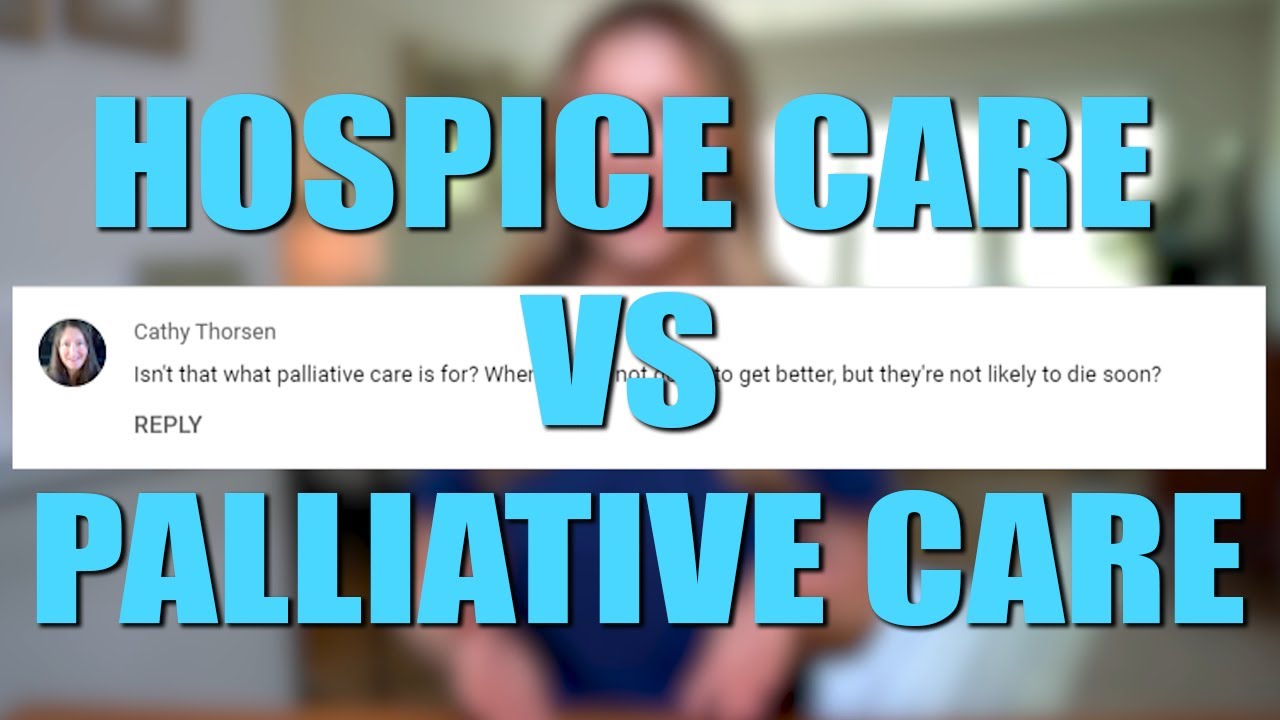Palliative Care and Hospice Care: What is the difference?
Summary
TLDRPalliative care and hospice care both provide support for people with serious illnesses, but they serve different purposes. Palliative care focuses on improving quality of life for patients at any stage of illness and can be combined with treatments aimed at curing or managing the illness. Hospice care, on the other hand, is for patients who have six months or less to live and are no longer seeking curative treatments. Both types of care emphasize comfort, symptom relief, and emotional support, with services available at home, in hospitals, or care facilities.
Takeaways
- 💡 Palliative care and hospice care both support individuals with serious illnesses, but differ in purpose and timing.
- 🏥 Palliative care is specialized medical care for those with serious illnesses like cancer or dementia, aimed at improving quality of life.
- 💊 Palliative care patients can receive symptom management while continuing treatment for their illness.
- 🎯 The primary goal of palliative care is to improve a person's quality of life by preventing or easing suffering.
- 👩⚕️ The palliative care team helps patients and families make difficult healthcare decisions.
- 🏠 Palliative care can be provided in various settings, such as hospitals, nursing homes, specialized facilities, or at home.
- 📆 Hospice care is for individuals with serious illnesses who choose to stop curative treatment, typically when they have six months or less to live.
- 🙏 Hospice care focuses on improving quality of life and supporting both the patient and their family during the end-of-life stage.
- 💞 Hospice care provides emotional and spiritual support to both patients and their loved ones.
- ⚕️ Hospice care includes pain and symptom relief, as well as help with advance care planning, and can be provided at home, in hospitals, or nursing homes.
Q & A
What is the main difference between palliative care and hospice care?
-The main difference is that palliative care can be provided at any stage of a serious illness, while hospice care is typically provided when a person has six months or less to live and has decided to stop treatments aimed at curing the illness.
What types of illnesses may require palliative care?
-Palliative care is for people with serious illnesses such as cancer, dementia, or any other life-threatening condition where symptom management and quality of life are a concern.
Can palliative care be combined with curative treatments?
-Yes, patients in palliative care can receive treatment to help slow or stop their illness while also receiving care to manage symptoms and improve quality of life.
Where can palliative care be provided?
-Palliative care can be provided in a variety of settings, including hospitals, nursing homes, palliative care facilities, or in the patient's home.
When is hospice care typically recommended?
-Hospice care is typically recommended when a person has six months or less to live and either cannot or chooses not to continue treatments aimed at curing or controlling their illness.
What is the primary goal of both palliative and hospice care?
-The primary goal of both palliative and hospice care is to improve the patient’s quality of life by managing symptoms, reducing suffering, and providing emotional and spiritual support.
How do palliative care teams support patients and families?
-Palliative care teams work to ease suffering and help patients and their families make difficult healthcare decisions, providing support through emotional, medical, and decision-making challenges.
What additional services might hospice care provide that palliative care does not?
-Hospice care often includes additional services such as emotional and spiritual support for both the patient and family, advance care planning, and specialized end-of-life care.
Where can hospice care be delivered?
-Hospice care can be delivered in hospitals, nursing homes, specialized hospice facilities, or at home, depending on the patient’s needs and situation.
How can someone learn more about palliative and hospice care?
-To learn more, individuals can visit the National Institute on Aging’s website at www.nia.nih.gov/palliative-hospice for further resources and information.
Outlines

Dieser Bereich ist nur für Premium-Benutzer verfügbar. Bitte führen Sie ein Upgrade durch, um auf diesen Abschnitt zuzugreifen.
Upgrade durchführenMindmap

Dieser Bereich ist nur für Premium-Benutzer verfügbar. Bitte führen Sie ein Upgrade durch, um auf diesen Abschnitt zuzugreifen.
Upgrade durchführenKeywords

Dieser Bereich ist nur für Premium-Benutzer verfügbar. Bitte führen Sie ein Upgrade durch, um auf diesen Abschnitt zuzugreifen.
Upgrade durchführenHighlights

Dieser Bereich ist nur für Premium-Benutzer verfügbar. Bitte führen Sie ein Upgrade durch, um auf diesen Abschnitt zuzugreifen.
Upgrade durchführenTranscripts

Dieser Bereich ist nur für Premium-Benutzer verfügbar. Bitte führen Sie ein Upgrade durch, um auf diesen Abschnitt zuzugreifen.
Upgrade durchführenWeitere ähnliche Videos ansehen
5.0 / 5 (0 votes)






